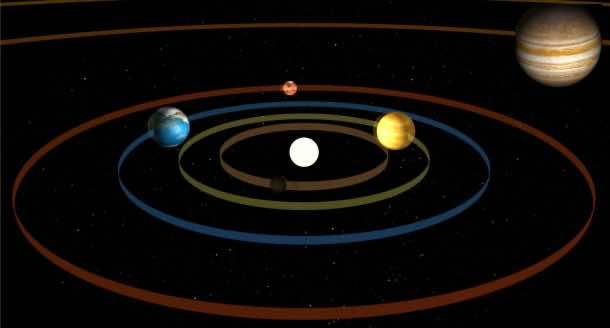The Earth, the Sun and all other bodies in our solar system were created out of a nebulous cloud of dust and gas. This swirling mass was is together by the amazing force of gravity.
The most unusual aspect of the birth of the solar system is that the shapeless swirling nebulous mass assumed the shape of a flat disc. Except for Mercury, all the planets in the Solar system revolve in the same plane. In fact, the variation of the planetary orbital paths from their plane is no more than 2 degrees.

This is an intriguing phenomenon that leads one to question that about the planetary symmetries. Why would the planets choose to revolve in a nearly horizontal plane, despite the vast three-dimensional space available to them?
The concept of planetary motion given by the planetary model of atom depicting the electrons revolving around the positively charged nucleus in 3D is not entirely correct. In fact, the planet revolutions, as well as the entire Universe are quite flat!
From our Solar system to the rings of Saturn to galaxies and Black Hole Accretion, the entire Universe is flat. Henry from MinutePhysics has explained the reason behind the flatness of the Universe. He attributes the flat universe to collisions and our three-dimensional existence.
It is not possible to calculate the path of individual objects moving in space under the gravitational force. However, the randomness of their motion disappears if we consider the overall spin of these objects as they revolve about their center of gravity, i.e. their total angular momentum.
Similarly, the mathematical modeling of the shapeless nebula implies that the swirling mass of dust particles and gasses must have a plane in which it was to spin.
The video depicts that initially, a lot of mass will not fit perfectly in the plane. However, the repeated collision of matter, as well as spinning about the center of gravity will force the mass to spin along the 2D plane.
The concept of the flat Universe has also been explained by the Physics Girl in this video:


